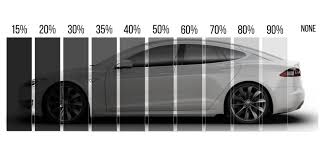Window tinting is one of the most popular car customizations in California. Whether it’s for privacy, style, or sun protection, tinting can enhance a vehicle’s look and functionality. However, not all tints are created equal—or legal. If you’re considering tinting your windows, it’s essential to understand the California car tint laws to avoid costly fines and ensure your vehicle remains compliant with state regulations.
What Are California’s Car Tinting Rules?
California has specific laws governing how much tint you can apply to each window of your vehicle. These rules are designed to balance personal preferences with public safety concerns, especially for law enforcement visibility during traffic stops.
Here’s a breakdown of the basics:
- Front side windows: Must allow more than 70% of light in. This means only a light tint is permitted.
- Rear side windows and rear windshield: You can use any level of darkness, but your vehicle must have dual side mirrors if the rear window is tinted.
- Windshield: Only the top four inches (the “eyebrow”) can be tinted with non-reflective film.
- Reflective tint: Metallic or mirrored tints that reflect more light than standard tint are prohibited on any window.
These regulations are enforced by local authorities, and violations can result in fines, fix-it tickets, or even failure of a vehicle inspection.
Medical Exemptions and Special Circumstances
California allows for certain medical exemptions for window tint. If you have a condition that requires limited exposure to sunlight—such as lupus, albinism, or photosensitivity—you can apply for an exemption that permits darker tinting. To obtain one, you’ll need a letter from a licensed physician and approval from the California Department of Motor Vehicles.
It’s important to keep documentation in your vehicle in case law enforcement requests proof of exemption during a traffic stop.
Legal and Safety Considerations
The main reason behind these laws is safety. Excessively dark tints can impair visibility, especially at night or in poor weather conditions. They also pose a risk to law enforcement officers who need to see inside a vehicle during stops.
Staying within legal limits ensures you avoid unnecessary encounters and fines, and keeps your vehicle safer for you and others on the road. If you’re unsure about your current tint, visiting a licensed installer who understands California’s tinting laws can help you stay compliant.
Where to Get Help with Car Tint Compliance
If you’re looking to learn more about California vehicle regulations, or need to check your current tint’s legality, the DMV’s website and local auto shops are excellent resources. Many window tinting professionals offer free assessments and can adjust your tint to meet state standards.
Conclusion: Stay Legal with the Right Tint
Navigating the California car tint laws doesn’t have to be complicated. By knowing the rules, working with reputable installers, and understanding any exceptions that may apply to you, you can enjoy the benefits of tinted windows without the legal hassle. Whether it’s for comfort, privacy, or protection, choosing the right tint means staying safe—and staying legal—on California’s roads.



